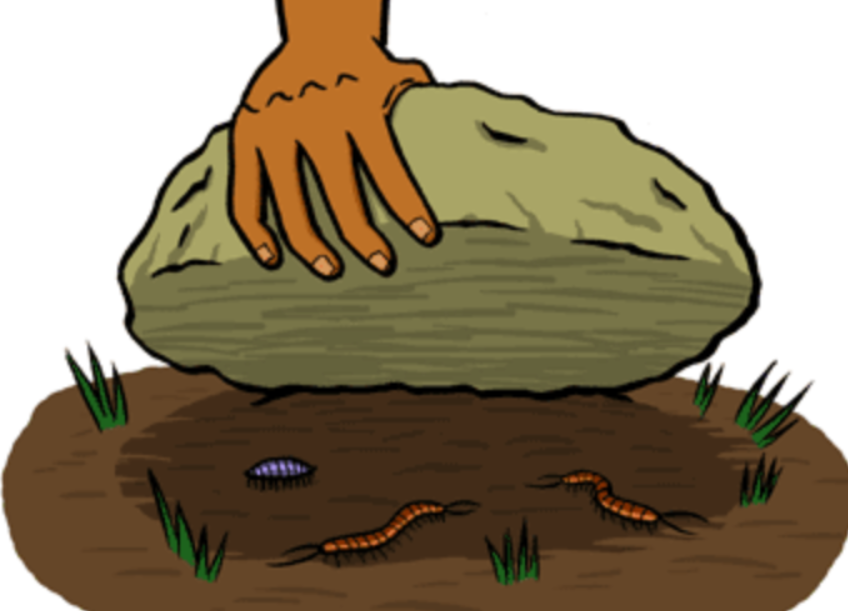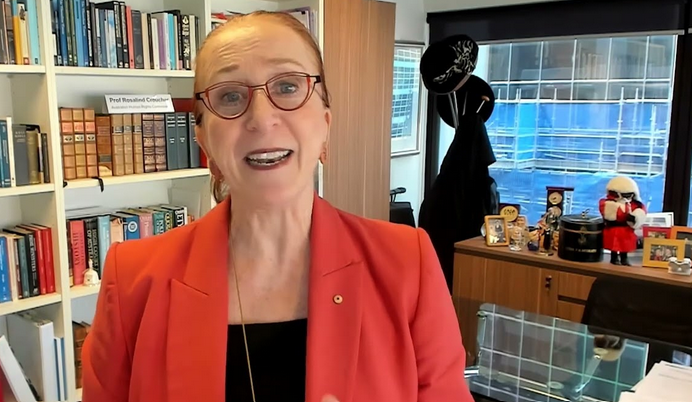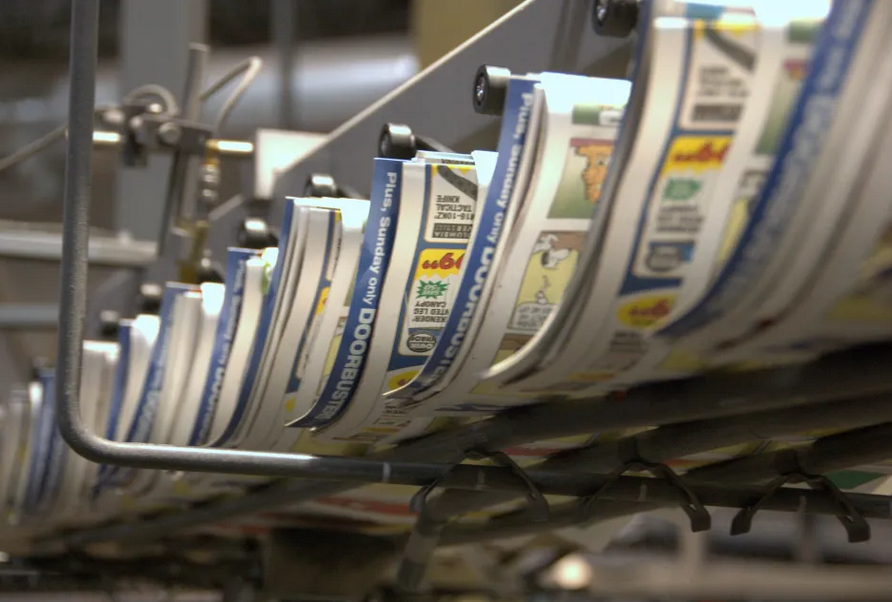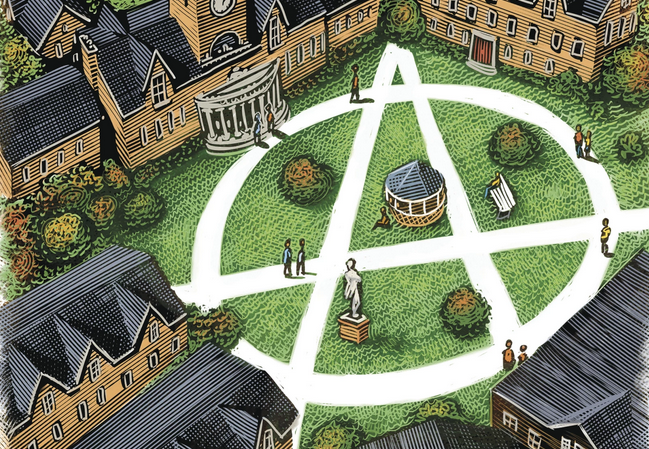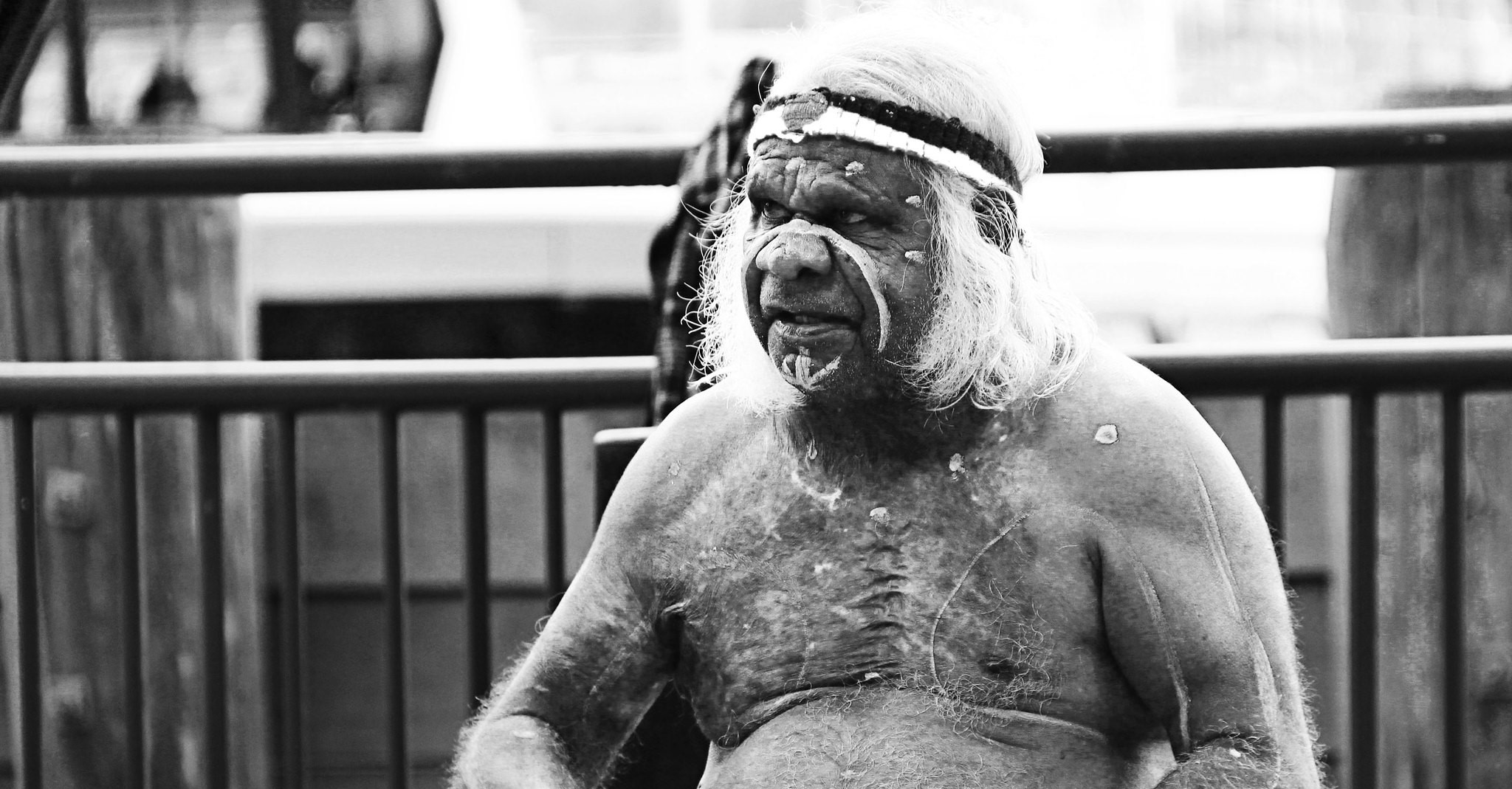
Imprisoned in the Oldest Continuous Culture
Now what’s going to happen to us without barbarians?
Those people were a kind of solution.
—C.P. Cavafy, Waiting for the Barbarians
The frequent claim that Australian Aboriginal culture is the oldest continuous culture on Earth, measured at 50,000 years, is a curious one. First, it is incorrect. This title belongs to the San people, who have existed for at least 150,000 years in southern Africa. Second, it is curious that this claim is used as proof of the value of traditional Aboriginal culture. Curious indeed, since the claim, which is a claim of conservatism par excellence, is frequently made by those who themselves subscribe to a view that culture should be dynamic, embracing change, in other words progressive. The question arises of how this strange alliance between white political progressivism and indigenous cultural conservativism came to exist and how it continues.
The favourable view of indigenous peoples has been an old companion of progressive politics. It arose after the discovery of the New World, with ideas such as Rousseau’s “noble savage” fascinating the intelligentsia of his day. This fascination extended to the reading public, who developed an insatiable hunger for stories of the otherworldly virtues and vices of people untainted by civilisation, as found in, for example, Melville’s Typee and Defoe’s Robinson Crusoe. These texts attracted readers not only by their descriptions of a people utterly unlike those in the Old World but also as means by which these authors placed their own civilisation in a new light. To this day, this hunger for the exotic continues, albeit under conditions of severe scarcity—those untainted by civilisation only exist in isolated pockets and the people once featured in those famous novels adopted modern lifestyles long ago.
I count myself among those hungry for the exotic. This hunger led me in 2015 on a tour to visit the indigenous Embera village deep in the Panamanian rainforests. After arriving by canoe, I did not encounter the earnest charms of a Friday or witness the pure beauty of a Fayaway. I found a collection of unanimated-looking people moving into a tired routine where they demonstrated their ancient cultural practices from 11 a.m. to 12 noon, provided a catered lunch at noon, and had a faux tattooing session from 12.30 to 1 p.m. It was all very punctual; several tribe members wore Casio watches alongside their traditional garb.
I was disappointed, especially as they appeared bored with us as visitors. This disappointment revealed to me a secret hope I had not acknowledged before but which I now believe is latent in all those like me who grew up reading exotic novels. Seekers of the exotic enjoy not only a view into a world unknown but also revel in being transformed ourselves into something exotic and extraordinary in the viewpoint of the noble savage, suitably astounded by our pale skin, soft hair—the hope that we will be perceived as white gods like Cortés. Our group, instead of running from the prospect of being ignobly tattooed as Melville describes in Typee, lined up for our tattoos that would later wash off as we canoed back to the dreariness of civilisation, feeling rather as if we had never left.
These same anachronistic hopes run through intercultural relations between indigenous and white Australians, forcing the former to either conform under the weight of a 50,000-year-old way of life or else feel they are betraying their authentic self by assimilating to mainstream Australian culture. This kind of binary is unique in the progressive discourse, which prides itself on its romanticisation of spectrums, especially in the fields of sexuality and gender. Perhaps the trans-racial is an impasse for progressivism, or perhaps a logical leap in waiting. Either way for now the binary remains and is a kind of spectre haunting both mainstream and indigenous Australian culture.
Either way for now the binary remains and is a kind of spectre haunting both mainstream and indigenous Australian culture.
Evidence for this can be found in political issues that plague indigenous communities such as problematic attitudes towards education and women. These issues are caused in part by traditional Aboriginal culture, as Aboriginal politicians such as Jacinta and Bess Price argue, rather than being solely the fault of colonisation as is so widely believed. The African-American economist Thomas Sowell has made similar observations in the face of the scapegoat of slavery regarding issues within black communities. He regards current social problems not as the remnants of the institution of slavery but rather as the result of the southern “cracker” culture that blacks adopted and later the welfare state that destroyed the integrity of black families in the 1950s and 1960s.
Perhaps, in Australia, we might also one day be given a similarly nuanced view into the cultural causes of issues in Aboriginal communities that extend beyond the old tagline: colonisation was bad. However, rather than try to dissect political issues, I believe that the hamstrung nature of intercultural dialogue in Australia is more clearly displayed in the arenas of life that are more purely cultural, namely language and the arts. One episode from Australian history is emblematic in this regard.
“Oh my poor race … what have I done?” exclaimed Fanny Cochrane Smith (atop this page) in despair upon hearing a recording of herself singing on an Edison phonograph. Born in December 1834, Smith was the last fluent speaker of the indigenous Tasmanian language, and the recordings of her songs made by Horace Watson (on behalf of the Royal Society of Tasmania) represent the only record of the now-extinct language. But why despair after rescuing your language from cultural annihilation? Could Smith not take comfort in cementing a small portion of her language into the annals of a 50,000-year-old culture? Considering that cultural extinction has been a central topic of concern in indigenous affairs, Smith’s despair seems not only odd but absurd. Should she not have celebrated at this moment? Perhaps Smith sensed something less than wholesome behind Horace Watson and the Royal Society of Tasmania’s philanthropic mission: “the advancement of knowledge”.
A comparable case is a fear once held by Native Americans that photography would take one’s soul. This curious fear might be a well-known tidbit but it does, along with Smith’s grief, point to a somewhat sensible fear of representation by another. Whether derogatory or complimentary and patronising, representation of the indigenous has often lent itself to caricature. This apprehension towards the intercultural arena, such as representation in media, is what I believe explains Smith’s grief and many other peculiarities about Aboriginal culture in modern Australia.
Another example occurs about a century after Smith’s recording, when the Tasmanian Aboriginal Centre (TAC) began attempting to reconstruct the “Palawa Kani” language as a composite language (a process which is far more invention than reconstruction). Several linguists had previously given up the project due to the scant remnants of the language, namely a few fragments and a verbatim translation of the Lord’s Prayer. Despite the dubious prospects of the project, the real dubiety begins in 2012 when in response to Wikipedia publishing an article on this composite language’s progress the TAC launched a copyright claim and takedown request of the page.
The TAC language program co-ordinator, Annie Reynolds, is quoted as saying that the language’s use should be restricted “until Aborigines themselves are familiar and competent with it”. The claim and request were denied, since languages are by definition part of the public domain. This raises the question of what true value a language can have when it is neutered by an authority being far more restrictive than even the Académie Française. The usage manual created by the TAC for Palawa Kani dictates that if the non-indigenous want to use the language they must make a formal request. Assuming their request is accepted they will be allowed to use “words and simple phrases in several categories including but not limited to natural objects such as flora and fauna, features of the landscape and natural environment”, but not for “farms, office buildings, educational facilities, homes, streets, etc. which have no connection to collective Aboriginal values”. This attitude, produced by progressive discourse, imprisons Aboriginal culture, frozen forever like the Embera tribe in a cultural stasis where they act out an eternal prehistoric utopia.
We find an identically withheld and uncooperative character in Aboriginal art. For even where white Australians believe they are participating in Aboriginal Australian culture they are most likely receiving a partial, censored or withheld experience.
TAKE DOT PAINTING, which is considered the quintessential Aboriginal art form, but was in fact developed in the 1970s in an art school in Papunya run by a white teacher, Geoffrey Bardon. Under Bardon’s guidance, Aboriginal artists first depicted sacred stories on canvases, which began to sell in private auctions and exhibitions. However, issues began over the subject matter of the paintings, which included sacred stories and secret symbols now accessible to whites and Aborigines of other tribes. The dots were a method of obscuring the content and censoring sacred objects, a method that did not exist before in Aboriginal rock paintings or etchings. These dot paintings became enormously popular and sold across Australia and internationally. What did they represent? What did they mean? No one knows, but dot painting is still well regarded despite being the indigenous equivalent of a redacted document. In the end, it was fortunate for those Papunya artists that Western art and its curators had long given up on meaning, even if they had not.
In the end, it was fortunate for those Papunya artists that Western art and its curators had long given up on meaning, even if they had not.
I think dot painting has had a net positive effect. It has a unique cultural place in Australia and has changed the lives of many artists for the better while affording Aboriginal art a unique kind of branding that is recognisable around the world. However, I do think that the intercultural in this success could be better emphasised. Bardon’s role in the creation of dot painting should not be a “gotcha” for conservatives nor an object of shame for progressives. The success of dot painting need not be decided for one race or the other, but rather as an Australian achievement. Unfortunately, the very opposite attitude predominates.
Look at the recent Australian film Leah Purcell’s The Drover’s Wife. Purcell’s film is a postcolonial revision of Henry Lawson’s story presented through a feminist First Nations lens. Predictably, it has transposed the evils of nature in Lawson’s story onto white males. Unfortunately for Purcell, this kind of old-hat subversion of legacy media will not be effective on my generation. We have scarcely heard of Henry Lawson, let alone read him, and so the film is likely only to please an older generation of leftists. In any case, Leah Purcell gave the latest example of this kind of divisive tone while talking about her new film on Radio National. When asked about her writing process, she replied, “When I write, I write two stories. One for my non-indigenous audience and one for my indigenous audience. So when [the indigenous] come to see this film they have the power.” So much for unity.
Who can blame Purcell? This is par for the course for postcolonialism, whose raison d’être has been the supposed impossibility of intercultural understanding. This has been the case since the inception of the field by thinkers such as Homi Bhabha, Gayatri Spivak and Edward Said. According to postcolonialism, whenever an indigenous person, or “subaltern”, attempts to make intercultural dialogue they are either implicit in their oppression or else they are using “mimicry” as a kind of subterfuge. In either case, the dialogue is futile and can only result in servitude or rebellion. Accordingly, one of the founding documents of postcolonialism, Spivak’s essay “Can the Subaltern Speak?”, concludes that the subaltern cannot speak. It is no surprise that power is the only substance with ontological priority in this field, considering it was inspired by the work of critical theorists and postmodernists such as Foucault. Despite the obvious undemocratic colourings (or perhaps because of them), postcolonialism has had an enormous effect on the attitudes to intercultural relations in Australia through our universities.
As Professor Emma Kowal describes in her book Trapped in the Gap, progressive whites affected by post-colonialism find themselves trapped by endless ambiguities, contradictions and double binds when they attempt to help the indigenous. At the heart of the issue is a contradiction between, on the one hand, the desire to see Aboriginal Australians become statistically identical to whites in health, wealth and education, and on the other, maintaining their separate cultural identity and resisting cultural erasure. For those Aborigines who need assistance, the choice presented to them is a Faustian one: betray your culture and gain the benefits, or remain authentically impoverished. The progress towards the Close the Gap targets has been agonisingly slow (and in some cases, no progress has been made at all) which is no surprise when you consider the attitudes and philosophy behind those endeavouring to help.
Literacy rates have been especially bad. The Close the Gap and NAPLAN reports paint a grim picture of education inequality between non-indigenous and indigenous students, with gaps of 25 to 30 per cent in literacy rates. From 2008 to 2018 the Close the Gap campaign decreased the gap by 5 to 10 per cent in two year levels but in others had no impact at all. In the remote communities of the Northern Territory, there are adult illiteracy rates of nearly 70 per cent, and 61 per cent of students fail to meet minimum literacy standards. This is remarkably little progress considering the campaign has run for over a decade and that state and territory government per capita expenditure on Aboriginal and Torres Strait Islander people is approximately double the per capita expenditure on non-indigenous Australians.
To put into perspective how ineffective we have been, we might take a comparable example from history. After the Cuban Revolution in 1960, Fidel Castro embarked on a war against illiteracy and after an eight-month campaign succeeded in raising the literacy rate from 70 per cent to nearly 100 per cent by teaching over 700,000 people to read and write including the various indigenous groups spread across Cuba. The success of this campaign seems miraculous in the face of our difficulties in remote communities which house some 50,000 indigenous Australians. The brigadistas or literacy brigades which accomplished this campaign were run in a regimented fashion according to military protocol, with the teachers required to wear military fatigues. This literacy campaign was carried out with a consistent, unified and entirely didactic focus—a far cry from the paranoia and neuroticism spawned by progressivism. What the brigadistas had and what we lack is a true calling, a mission.
While I cannot regard the Marxist mission as anything more than crude utopianism which has caused enormous suffering across the world, I can respect that Castro’s literacy brigades believed in what they were doing. It is a pity we cannot say the same in Australia. However, more than simply having a mission, I believe that all intercultural missions must include a dimension that transcends culture. Our pluralist society and the secular moral edicts of social justice that underpin it, in which relativism is held paradoxically as the highest virtue, have replaced our traditional sources of moral guidance. Critical-theory schools like postcolonialism have stripped us of our grand narratives and left us in a world where the only rule is that of mediocrity and all truth is mere opinion. Here, like endangered species, all cultures are valuable and all cultures need to be preserved, no matter the damage it does to the people concerned. In our world there is no truth beyond culture—truth is cultural. This strange circumstance has led our staunchest believers in cultural progress to champion a culturally conservative cause—as long as it’s for a culture other than their own.
BEFORE the secularisation of the world, our Christian heritage was the gold standard in intercultural dialogue and provided people with a transcendent mission to bridge cultural differences. Whereas Hinduism supported the segregation of society into castes, and Islam could only unite people through the force of the sword and the imposition of Arab culture, Christianity has had a remarkably peaceful record for intercultural relations. By adopting and adapting local festivals and cultural practices Christians have exercised a cultural flexibility partnered with an uncompromising commitment to the mission of Christ—which exists higher than culture. This is all quite predictable in a theological sense since we do not consider the Truth to be a way of life or a set of rules but rather believe Truth is a person. This belief allowed Christianity to provide the basis for community across the Roman empire when belief in mere civic values became an insubstantial centre point for communities.
This belief allowed Christianity to provide the basis for community across the Roman empire when belief in mere civic values became an insubstantial centre point for communities.
We can observe this clearly in that arena of life that is most purely cultural, the arts. While both Islam and Christianity abhor idolatry as per their Jewish roots, Christianity provided the freedom and expression that gave today’s art world its creation. As far back as the Middle Ages, Christians found justification in Christ not only regarding the eternal state of their souls but also for the world and its representations. Just as Christ boldly stepped forth into the mess of the world, so did those early Christians boldly put forward the sacred into art works, such as the Biblia pauperum, a famous picture Bible for the illiterate, and icons that became an essential part of worship for the Eastern Church. Education in local languages was first initiated by the Jesuits, which was an enormous change from the previous forms of education that used Latin or Greek. This is all in stark contrast to the Islamic attitude to representation, as demonstrated in the Charlie Hebdo attack and the brutal murder of a French secondary school teacher over depictions of Mohammed.
It is this Christian heritage that we should draw on in our intercultural endeavours with indigenous Australians. After all, 55 to 60 per cent of indigenous Australians identify as Christian and no more than 1 per cent identify with traditional indigenous beliefs. Here is common ground before us with far greater opportunity rather than a long-dead past. Perhaps the wisdom of this has even been noticed in the intelligentsia. Aboriginal leaders such as Noel Pearson and Marcia Langton have begun to wax nostalgic about the Church missions that came before the hell of the “free determination” era in which “culture” was allowed free rein in indigenous life, leading to the problems we have today in the remote communities.
As a final note, I believe the decision to change the wording of the national anthem from young to one was a mistake. For we are a young nation and the birth of our nation should be seen as an opportunity for Aboriginal Australians. The birth of Australia constitutes, if nothing else, a break with the prehistoric past—precisely the break that allows Aborigines to escape from their cultural prison and enter into the fabric of Australia as Australians where there is plenty of room for redefinition, leaving behind atavism and apprehension. But this is a lot to ask of indigenous Australians when we have become incapable of making the leap beyond the merely cultural ourselves.
Conor Ross is a writer, poet and school teacher who lives in Melbourne
